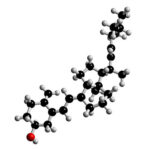 Researchers at the Veterans Affairs Medical Center, in Minneapolis, Minnesota, studied elderly men.
Researchers at the Veterans Affairs Medical Center, in Minneapolis, Minnesota, studied elderly men.
First, the details.
- 1606 elderly men participated.
- 25(OH)D blood levels and frailty status were measured at the start of the study.
- Frailty was measured again at about 4 to 5 years later.
- Frailty was classified as robust, intermediate, or frail at the start and robust, intermediate, frail, or dead at follow-up.
And, the results.
- After adjusting for potential confounding factors, men with vitamin D levels less than 20 ng/mL had at least 1.5 times higher risk of greater frailty at the start of the study vs men with levels of 30 ng/mL or greater.
- There was no association between lower vitamin D levels at the start and greater frailty at follow-up.
The bottom line?
The authors concluded, “Lower levels of 25(OH)D (less than 20 ng/mL) in community-dwelling older men were independently associated with greater evidence of frailty at baseline but did not predict greater risk of greater frailty status at 4.6 years.”
It would have been interesting to have measured vitamin D levels at the end of the study, not just at the start.
All men studied were Caucasian, so it’s not known if the same results would have been the same for other groups.
2/22/11 22:26 JR